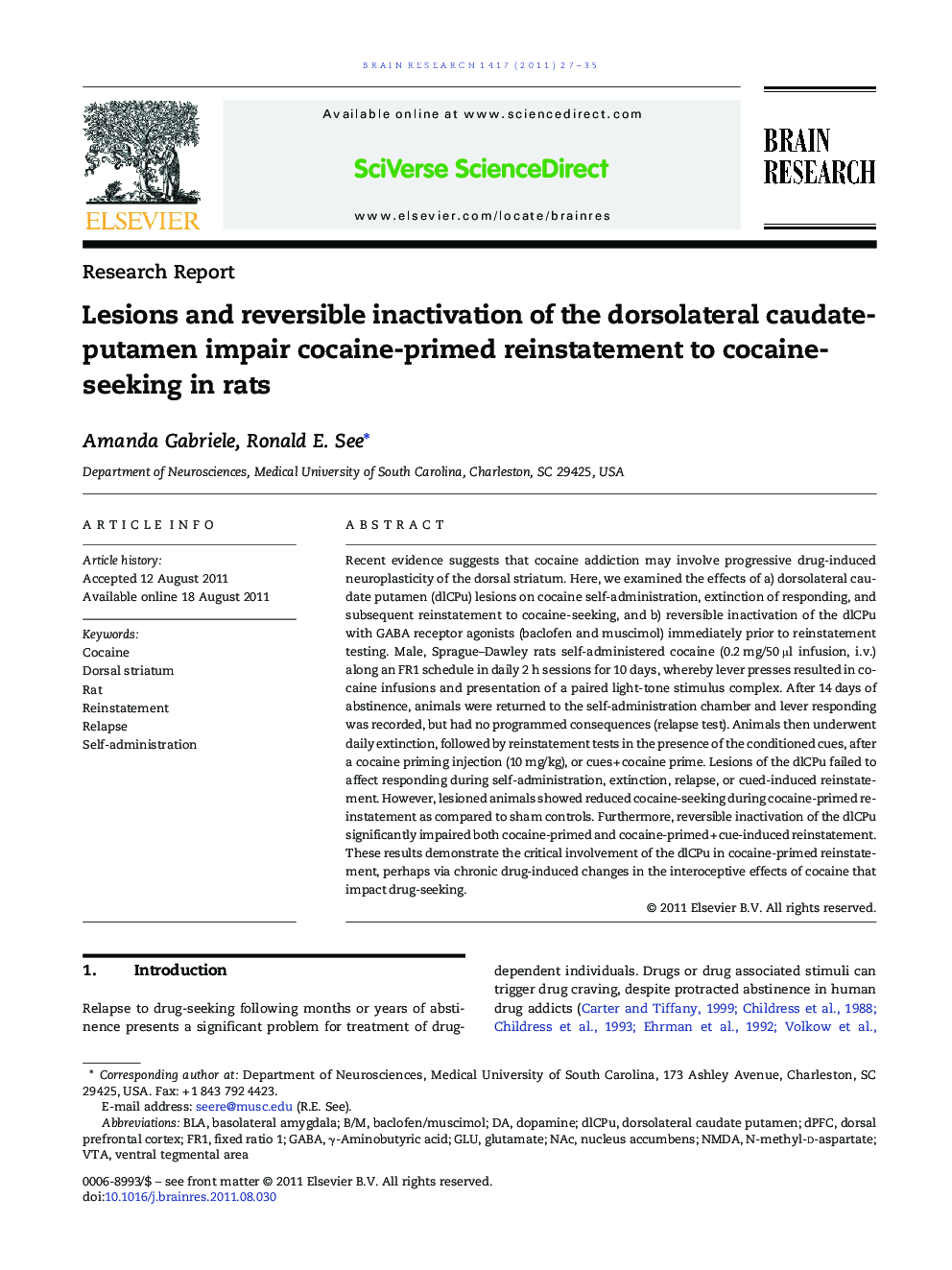| Article ID | Journal | Published Year | Pages | File Type |
|---|---|---|---|---|
| 4325661 | Brain Research | 2011 | 9 Pages |
Recent evidence suggests that cocaine addiction may involve progressive drug-induced neuroplasticity of the dorsal striatum. Here, we examined the effects of a) dorsolateral caudate putamen (dlCPu) lesions on cocaine self-administration, extinction of responding, and subsequent reinstatement to cocaine-seeking, and b) reversible inactivation of the dlCPu with GABA receptor agonists (baclofen and muscimol) immediately prior to reinstatement testing. Male, Sprague–Dawley rats self-administered cocaine (0.2 mg/50 μl infusion, i.v.) along an FR1 schedule in daily 2 h sessions for 10 days, whereby lever presses resulted in cocaine infusions and presentation of a paired light-tone stimulus complex. After 14 days of abstinence, animals were returned to the self-administration chamber and lever responding was recorded, but had no programmed consequences (relapse test). Animals then underwent daily extinction, followed by reinstatement tests in the presence of the conditioned cues, after a cocaine priming injection (10 mg/kg), or cues + cocaine prime. Lesions of the dlCPu failed to affect responding during self-administration, extinction, relapse, or cued-induced reinstatement. However, lesioned animals showed reduced cocaine-seeking during cocaine-primed reinstatement as compared to sham controls. Furthermore, reversible inactivation of the dlCPu significantly impaired both cocaine-primed and cocaine-primed + cue-induced reinstatement. These results demonstrate the critical involvement of the dlCPu in cocaine-primed reinstatement, perhaps via chronic drug-induced changes in the interoceptive effects of cocaine that impact drug-seeking.
► Excitotoxic lesions of the dorsolateral caudate putamen (dlCPu) failed to affect cocaine self-administration. ► dlCPu lesions blocked cocaine-primed, but not cue-induced reinstatement to cocaineseeking. ► Reversible inactivation of the dlCPu reduced both cocaine-primed and cocaineprimed + cue-induced reinstatement. ► These data expand the circuitry of cocaine-primed reinstatement to drug-seeking to include the dorsal striatum.
